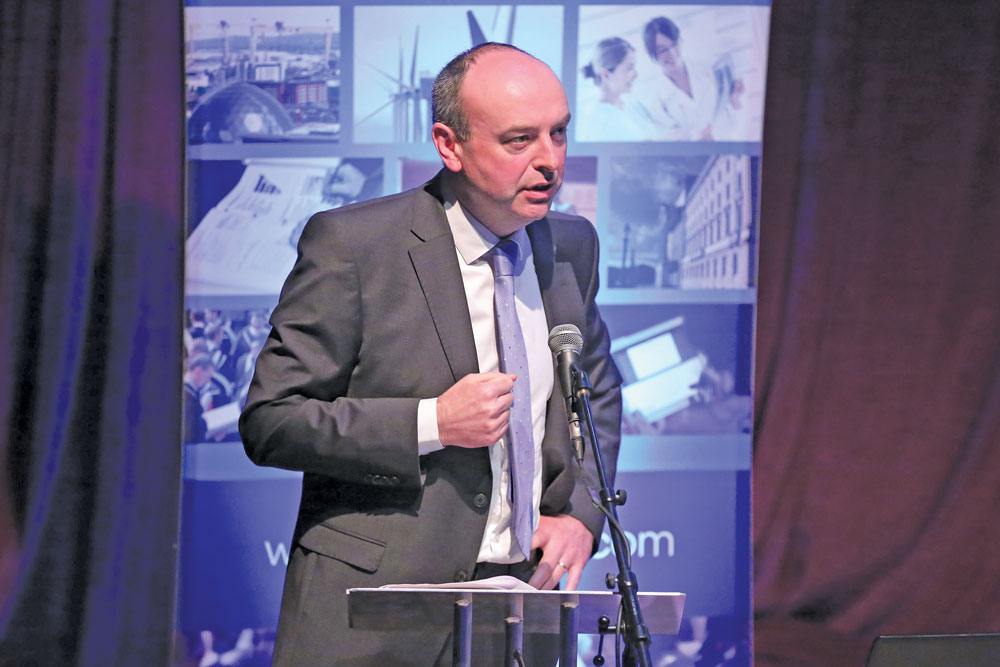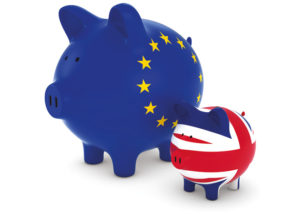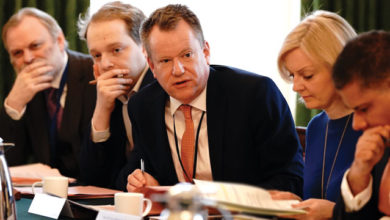Exchange rate volatility


An increasingly volatile euro/sterling exchange rate could be one of the most immediate impacts of the UK’s decision to trigger Article 50 of the Lisbon Treaty, according to Ibec Director of Policy and Public Affairs Fergal O’Brien.
“This may well be the case, once the issue of the UK’s divorce settlement comes up for discussion. Only one in four Irish companies hedge against euro/sterling currency movements at the present time. This figure may well increase during the period ahead,” he says.
Pointing out that sterling has fallen 18 per cent against the euro since the Brexit referendum, O’Brien explains: “This fall in sterling will both increase the cost of Irish goods going into the UK and mean increased competition on Irish shelves from British products. It will drive retail activity of Irish consumers cross-border and online.
“Exchange rate volatility has occurred before. However, this time it’s different. Previous bouts of sterling weakness were cyclical. These recent changes represent a structural change in the strength of the currency. A weak sterling may be the new normal facing Irish business.”
O’Brien highlights the recent unifying trends that had become apparent within the island of Ireland’s economy: “This is particularly the case, where agri-food is concerned. It is a process that is delivering enhanced wealth opportunities to both parts of the island. The maintenance of this momentum is an important part of the final Brexit deal. This all-island market is delivering real prosperity for citizens for Ireland as a whole.”
O’Brien also stresses that cross-border tariff barriers must be avoided: “Preserving the common travel area is absolutely crucial. The UK and Ireland are unique in having a common labour market. This must also be maintained post-Brexit.”
He adds that tailored solutions will be needed to address the Irish economy’s exposure to the impact of Brexit: “The free travel area between the UK and Ireland must be preserved and the future development of the all-island economy must be prioritised. A comprehensive state aid package is needed to guard against potential economic disruption and dislocation. State agencies will need extra resources so they can better support companies diversifying into new markets.”
O’Brien states that the UK threat to slash business taxes and regulation is an indication of the post-Brexit economic reality: “Every government decision needs to be Brexit-proofed. We need to aggressively confront the UK competitiveness challenge and, at the same time, position Ireland to take full advantage of the inward investment opportunities that will arise.”
Brexit guide
Highlighting the recent publication of Ibec’s Brexit guide, he adds: “This represents a tool kit for every Irish business.”
He explains that Ibec is working at several levels to ensure that the risks posed by Brexit to the Irish economy can be minimised. In the first instance, the organisation is working at a domestic level to ensure the Irish Government and relevant state agencies respond swiftly and decisively to support businesses during this period of uncertainty.
Secondly, Ibec is working at a national, UK and EU level to ensure Irish interests are protected in the complex exit negotiations and in the new trading relationship the UK will forge with Europe.
“Thirdly, we are working to support member companies as they navigate the challenges of Brexit. The guide sets out the potential implications of Brexit for companies, and proposes pragmatic steps that businesses can take to assess the risks and prepare a response.”
The Ibec representative points out that, despite the significant risks to Irish trade, many businesses are not preparing for Brexit: “A recent Ibec survey found that 54 per cent of businesses have not taken any action to understand the implications for their business and how they might respond.
“The future model for the UK’s relationship with the EU is unclear, and timelines for execution are not yet established, but Brexit’s potential implications for Irish business are so profound that companies cannot afford to take a ‘wait and see’ approach.
“Irish businesses not only have to deal with the impact of weak sterling on trade flows, but also the future complexity of operating under dual regulatory frameworks; new overheads associated with trading with a non-EU country; additional supply chain complexity; and new competitive and market access pressures.
“It will affect different companies in very different ways, but businesses need to be proactive and prepare their responses by identifying where the key risks and opportunities lie, to ensure they are not left behind when the uncertainty clears.”
Trade
O’Brien highlights that the UK remains the State’s second largest export market after the US. Two-way trade between the UK and Ireland is valued at approximately €60 billion per annum and is estimated to directly support 400,000 Irish jobs.

“These figures in themselves do not paint the full picture with some job-intensive, geographically-spread sectors more heavily exposed to the UK market. For example, 41 per cent of all food and drink exports and 70 per cent of Irish timber exports go to the UK every year.
“These sectors support not only direct jobs, but provide very significant support to local suppliers and regional economies. Ireland is also a significant market for UK goods and services. We are its fifth largest trading partner after the US, Germany, the Netherlands and France, receiving €11.4 billion of UK service exports and €18 billion in goods exported.”
Pointing out that, even before Ireland and the UK joined the then EEC, the common travel area allowed for the free movement of people and goods between the UK and Ireland, he says: “This enabled businesses to establish operations on an all-island basis. Northern Irish dairy farmers, for example, supplied to creameries north and south of the border. The longstanding family, historic, language and cultural ties, combined with free movement, means that Ireland and the UK effectively share a labour market. This has provided a very important safety valve for the Irish economy at times when high unemployment has forced workers to look abroad to find work.
He added: “It is estimated that there are up to 300 major and minor road crossings along the 500km border between the Republic of Ireland and Northern Ireland, and that 35,000 people cross the border each day.
“Both Ireland and the UK have stated in advance of formal negotiations that they are determined to avoid a return to a hard land border. However, maintaining free movement of people without maintaining other EU freedoms could present significant challenges.”
O’Brien points out that, subject to the UK’s future relationship with the EU, there are potential implications for rights and obligations, particularly regarding contracts that run beyond the exit date.
“The UK and Ireland are both members of the single market and EU customs union, allowing free movement of goods between both countries. The introduction of tariff barriers and border controls is looking more likely.
“If implemented, they will disproportionately impact Irish businesses due to the reliance on the UK market for raw materials; high trade volume, low-margin goods; and tightly intertwined cross border supply chains.
“In the long-term, Brexit may have implications for customer buying behaviour and market demand. The introduction of trade barriers, threat of non-EU competition, or slowdown in UK economic growth, for example, may put the viability of Irish business in some UK markets into question.”





